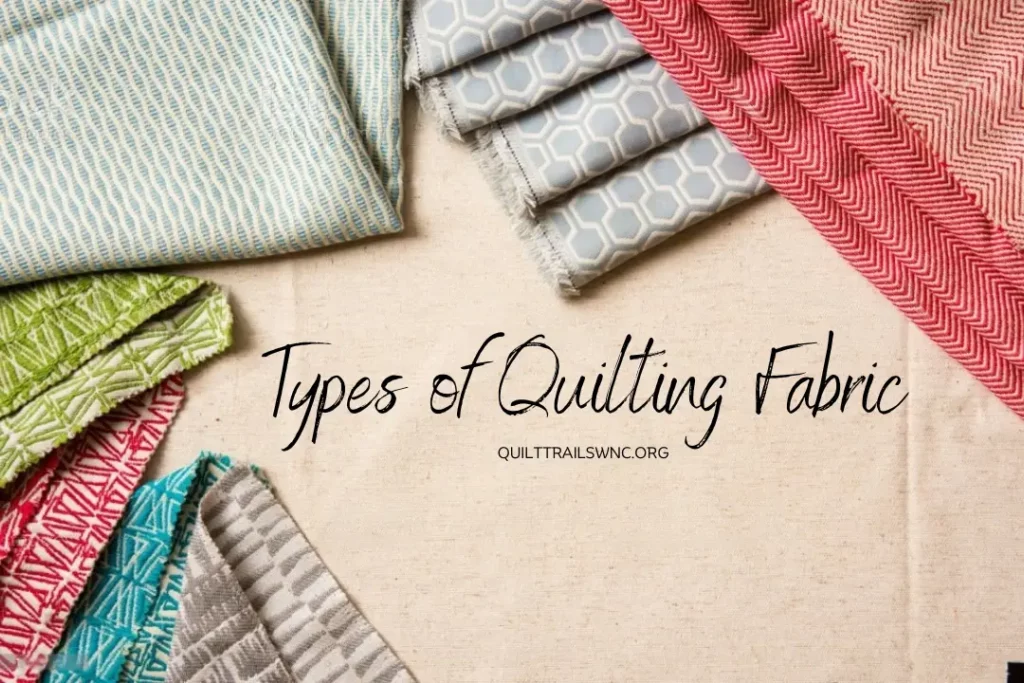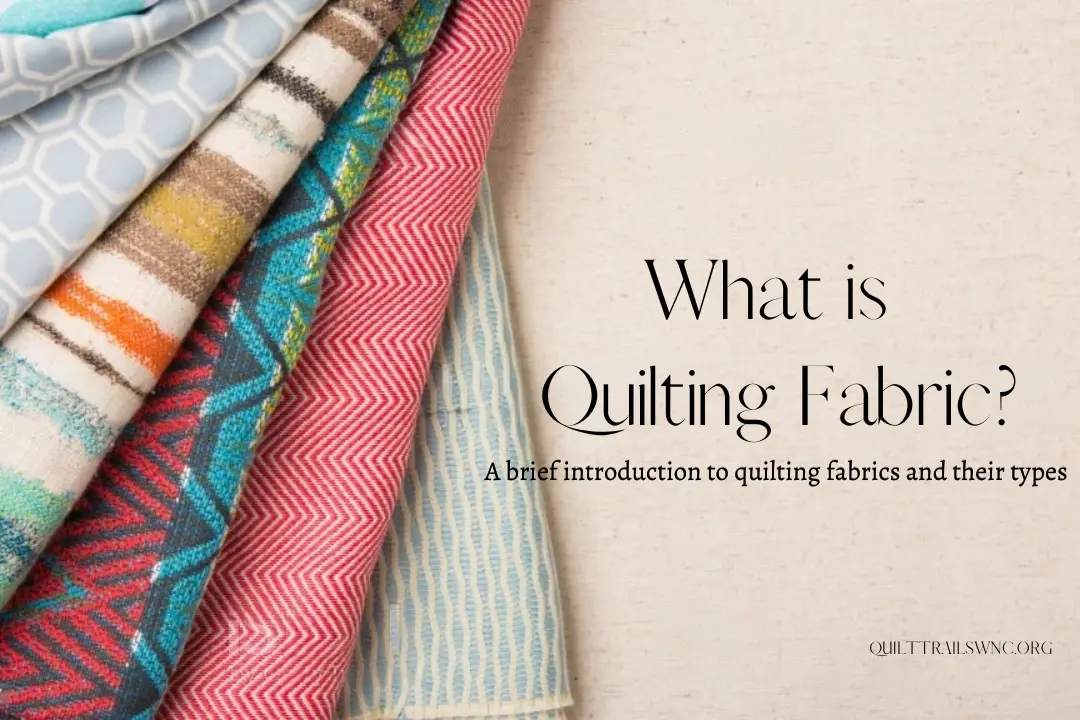Quilting fabric is any material or fabric used to make a quilt. However, the most popular quilting fabric is ”quilting cotton”, which contains 100% cotton, has a plain weave pattern, and is mid-weight and dense, so it holds up well to heavy use and frequent washing. Other popular quilting fabrics include flannel, wool, linen, and voile.

Types of Quilting Fabric
1. Quilting Cotton
It is the most popular choice among quilters because of its thickness and durability. During the sewing process, this cotton fabric maintains its shape well and does not stretch out easily.
The extra thickness of quilting cotton makes it last longer than usual and can also withstand many washes. Also, the stiff edges are less prone to fraying. It cuts easily and can be precisely matched to build quilt blocks. Unlike lighter fabrics, quilting cotton does not stretch out easily when pinned or clipped neatly before sewing.
It’s worth noting that apparel cotton and quilting cotton aren’t the same thing. Quilting cotton tends to be heavier than apparel cotton, and it can also vary in weight based on the brand and price.
Weight is determined by thread count, as you may know. Average quilting cotton offers around 60 thread counts in 1 inch, whereas high-quality quilting cotton has thread counts between 65 and 200 per inch.
The thread count is not generally displayed on the bolt. Therefore, hold the fabric up to the light and check if you can easily see through it. This indicates a low thread count. Another way to check quilting cotton is to unroll the bolt a bit and drape the fabric. Quilting cotton is stiffer and denser than soft apparel cotton, meaning it will hang in a straight line from the bolt.
Fat Quarter
You may occasionally come across the term fat-quarter when searching for quilting cotton fabrics. The fat quarter is a unit of measurement in which quilting cotton is commonly sold. Basically, it is one-fourth of a yard, but rather than skinny quarter-yard strips (as would be the case if you tried to buy a quarter of a yard off a roll), it is more like a square pattern.
This is achieved by cutting a yard in half lengthwise and then cutting each segment in half again, this time widthwise. It provides quilters with a more versatile shape of fabric to work with without having to purchase more than they need.
2. Voile
Voile’s lightweight and transparent nature may make it seem unsuitable for quilting. The popularity of voile for quilting has grown in recent years.
Voile presents some challenges for new quilters because it is slippery, so I wouldn’t recommend using it. Thus, it is probably most suitable for experienced quilters! Also, voile costs more than quilting cotton.
Although quilting with voile presents some challenges, the quilts you stitch will be lighter and cooler. Voile fabric is commonly used in quilts intended for artistic purposes or summertime quilts.
3. Wool
The crimped quality of wool fibers helps keep warm air trapped in the quilt, making it an effective insulator. Besides offering natural mold and mildew protection, wool is also flame-resistant! This highly durable material lasts for a long time. Moreover, wool doesn’t fray when you cut it, so cutting blocks is quick and easy.
The downside is that 100% wool is quite expensive and bulkier than quilter’s cotton, so you’ll need stronger thread, a heftier needle, and perhaps a walking foot if you use it. In order to avoid creating ridges at every intersection, you’ll also need to press seams open inside the quilt.
However, wool quilts aren’t going to have the same range of patterns as quilting cotton, but they are more durable and practical if you live in a cold climate.
4. Cotton Flannel
This fabric is often used to make flannel quilts for newborns because it is soft and cuddly. Individuals of all ages can use quilts made from this fabric. Flannel can also be combined or mixed with other fabrics.
Quilting with flannel presents a few unique challenges. First of all, cutting it neatly may give you a headache, particularly if the fabric is plaid or striped. The second problem flannel edges fray all over the place.
Make sure you purchase 100% cotton flannel by reading the bolt end or product description since some flannel is now containing polyester. Although polyester is cheaper than cotton, you should probably use 100% cotton flannel for a baby quilt.
To check whether you have 100 percent cotton flannel, hold a scrap of the material up to the light. If there is a loose weave visible through the fuzz, the material is likely to be of low quality.
5. Linen
Linen is a natural fiber made from flax. It has a nubby, loose weave that looks homespun and feels extremely soft. There is also a more dense version known as quilters’ weight linen. Essex linen is another option, which is a natural fiber blend consisting of 55% linen and 45% cotton.
The main disadvantage of using linen for quilting is that it shrinks easily and its looser weave can cause parts of the quilt to shift during sewing. However, you may be able to use linen if you make a few adjustments.
Firstly, you should not mix linen and cotton in a quilt. As the fabrics shrink at different rates, this is a recipe for disaster. Second, linen unravels rapidly when it is cut. In order to cut out all the pieces, you will need spray starch. Finally, if you intend to work with linen, you will need to use small stitches, a slightly larger seam allowance, and finished edges.
6. Other Quilting Fabrics
You can also use many other types of fabrics as quilting fabric, such as batik, silk, satin, velvet, muslin, denim, etc. To make a quilt top, you can also use old t-shirts or cloth scraps.
There is no restriction on the type of fabric you may use. It is up to you to find out what fabric you will feel comfortable working with by experimenting with different fabrics.
Conclusion
The term quilting fabric refers to
However, other types of fabrics can also be used for quilting, such as wool, cotton flannel, linen, silk, muslin, voile, velvet, batik, etc.

Leave a Reply